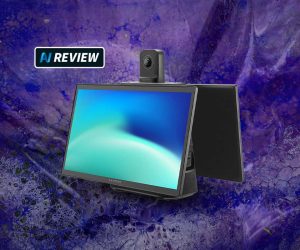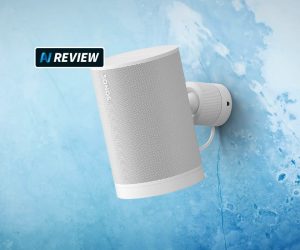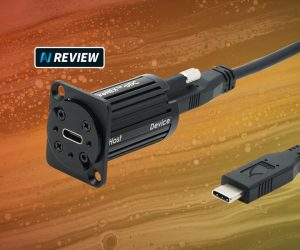
Review: Dynacord PM502 Powered Mixer
The humble Besser block of yore may be long gone, but the powered mixer still has plenty of appeal.
Review:/ Christopher Holder
My, how the humble powered ‘brick’ has grown up! Prior to lightweight Class D amplification coming of age, the portable powered mixer adhered to a very familiar form factor: 19-inch wide, normally about 4U high, a humble array of basic EQ, knobbage and metering, and heavy enough to suck passing comets into its orbit.
These unglamorous workhorses would be in every PA rental inventory (let’s not forget that powered PA boxes were until this millennium something only Meyer Sound really considered worth the hassle and Meyer never did anything portable), and in most pubs and clubs. When not in use they would prop doors open, and keep corrugated iron roofs from blowing away in the cyclone season.
Powered PAs have eroded the ‘brick’s’ market, making way for more highly featured small format (‘unpowered’) consoles with better EQ, more auxiliaries, and even some basic effects. The brick had its day. Or had it?
Dynacord has identified a market for a small-format powered mixer that is largely unmet by the current crop of products. The new PM502 is that product and it’s really rather good.
BUILT FOR PURPOSE
Dynacord has identified a market first, then spec’ed a powered mixer after. This isn’t a natty product in search of a customer, it’s the other way around. So who needs an amp strapped to a mixer?
Pubs, churches, fitness clubs, hotel lobbies, restaurants… The fact is, most venues now — even your single-origin café with its wooden crates on the street; or the single-parishioner church with its creche; or the spit ’n’ sawdust pub in that single-horse town with its corner stage and beer garden; or the single-minded suburban gym with its hot yoga room and smoothie bar – have more than one zone of audio, and very often a combination of active and passive speakers. In other words, there are many, many more loudspeakers in the world than there once was, and something has to be powering and controlling them.
And here’s where the PM502 is well pitched. It represents a competent mix package with the right combination of features and I/O.
MORE INFO
Price
AU$1695
Contact
Bosch: (02) 9683 4752 or [email protected]
Pros
Three independent outputs
Routing flexibility with the amp channels
100V line ‘Direct Drive’ mode
Cons
No per-channel on/off button
Limited metering
Summary
The best compact powered mixer on the market? Thanks to the PM502’s DSP, routing flexibility, Direct Drive 100V line mode and portability… the answer is yes.
LIGHTS ON
When I first pulled the PM502 I involuntarily threw the unit up over my head like a Armenian weightlifter. I couldn’t believe how light (4.9kg) and compact it was.
The layout is easy and uncluttered – you don’t need the dainty fingers of a Shenzhen smartphone sweatshop assembly line worker to operate the channel EQ. Plug in a mic and turn up the gain. There are three stereo inputs (including two pairs of RCA), which is more than customary on a compact mixer but is right for the market (think iPods, DJs, the AM/FM receiver). What’s more you can plug in a USB stick and the PM502 will read and play back music via the LCD.
For the purposes of this review I plugged the Speakon connectors to a couple of passive Bose foldback monitors. Talking into an AKG D880 dynamic mic there was plenty of clean level — whisper quiet even when cranking the 65dB of gain (there’s a global phantom power switch for condenser mics). The amp is rated at 2 x 450W (max. @ 1kHz) into 4Ω, which is perfectly adequate for a 12+horn box in most general purpose applications. No one is contending the PM502’s amplification will fill set the dancefloor alight or shake the windows, but there’s more than enough grunt for any portable application.
I then connected the Master B outputs into a pair of 15+horn active FBT loudspeakers. It was a neat combination. There’s some routing flexibility that means I could send the Aux foldback output to the Speakons rather than the default Master A output. It demonstrated to me how the PM502 can happily jump into any passive/active loudspeaker combo.
After plugging in my iPod into a pair of RCA sockets I was able to test some of the bingo call/DJ/aerobic instructor features. The PM502 features a very capable ducker called Talk Over. There are four presets that provide various levels of music attenuation and shape of the ducker’s ADSR envelope.
The compressor is also quite well spec’ed and easy to use. I guess you’d call it ‘master bus’ compression – you can’t switch it in on a per-channel basis. You can select from a handful of presets, everything from brickwall limiting to the more gentle Uplift Soft setting, and then, if you so desire, dig in and make changes to the threshold, attack, release, and ratio via the LCD panel.
Rounding out the master section features is an effects engine. As you’d expect, every channel (mono and stereo) has a post-fade FX pot, while the master section has FX send and FX return master pots. There’s a handy smorgasbord of reverbs, delays and modulation effects to choose from. What’s more, you can use the footswitch input to turn the effect on/off.

DISPLAY
The PM502’s LCD takes care of all housekeeping duties. It’s a familiar ‘one pushbutton pot’ affair. Anyone who’s used an iPod won’t have any trouble getting around the UI.
There are plenty of rewards for those who take the time to jump in. For example, at first glance you might assume the seven-band graphic EQ is set to work across the main stereo output, but you’ll discover you can have a different, independent GEQ set up for all three.
You’ll also discover a somewhat arcane LPN page. The so-called low-pass notch filters are a proprietary Dynacord feature designed to squeeze some more low-end impact out of a smaller system. It’s a little like the ‘bass boost’ button on your ghetto blaster, although it’s more dynamic than a simple EQ contour.
THE DIRECT APPROACH
There’s plenty to like about the PM502 package. Combining a traditional rackmount mixer interface with a very serviceable array of digital processing, it will slot into plenty of installs which require more mixing features than a basic zone mixer.
That said, this isn’t a FOH mixer’s first-choice board – the tone controls are broadbrush and the metering is quite rudimentary. Rather, the PM502 is built for ease of use on the front end.
In fact, it’d go as far to say that the PM502 is the installer’s friend. And here’s where the PM502 secret weapon comes out to play: the 100V Direct Drive mode. Yes! No need for separate output transformers, you can simply make the switch via the onscreen menu and plug in your constant voltage speakers via the Euroblock connectors on the back panel. (As an aside, if your PA/wedges don’t have Speakon connector you can use the Euroblock as stand-in binding posts for your speaker cables.) This is a fantastic, out-of-the-box boon for venues with multi-speaker, distributed systems or where distance is a factor. Naturally, switching to direct drive doesn’t preclude you from feeding your active PA or amps from the Master 2 and Aux outputs.
Other reasons for calling the PM502 the installer’s friend is a three-stage, four-digit, password-protected lockout mode. Once configured, there’s no need to worry about the DJ clipping the amps or the assistant manager inadvertently switching it to Direct Drive mode.
And then there’s the amplifier routing flexibility I alluded to. You can switch the two amp channels to handle six variations/permutations of the three outputs: anything from a conventional Master A left/right through to a summed Master B bus on one side with the aux send on the other. This is all likely to be a ‘set once, then lock it off’ affair, but also very handy for the savvy venue operator.
ANOTHER BRICK IN THE WALL
The brick is dead, long live the brick… albeit a featherweight, DSP-turbo-charged ‘brick’ with some very 21st century features.
If your jobs don’t require you to mix so much as ‘set levels’, then the PM502 is a sophisticated and powerful solution with some install-friendly features.
My final observation, and something that instills considerable confidence, is the fact that Dynacord didn’t contrive a way of expressing the Class D amp power as 2 x 500W (rather than 450W) thus pushing it over the combined magical ‘1000W’ marketing threshold. Thank you Dynacord. Thank you for being scrupulously German.















RESPONSES